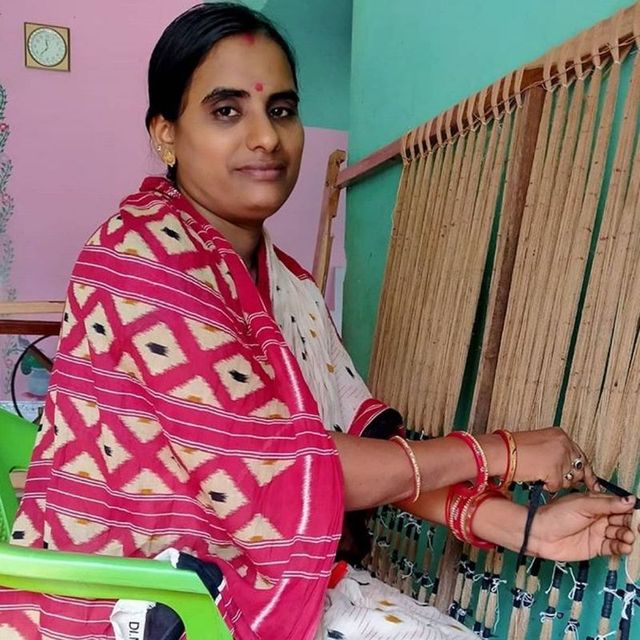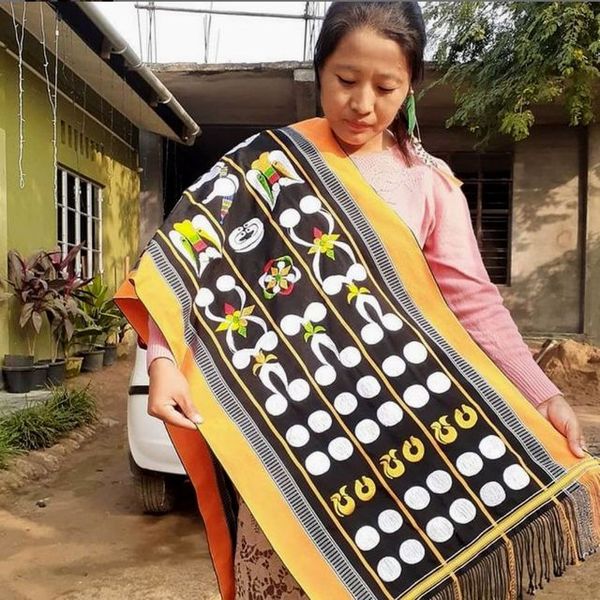“Handloom is not only the second-largest sector after agriculture in providing livelihood but also the largest unorganized sector in India. However, handloom weavers are drifting away from the sector at an alarming pace. Precious skills of centuries could soon be lost with weavers in rural areas having abandoned the craft for want of proper returns,” says Sharda Gautam, Anchor – Antaran Initiative, Zonal Manager at Tata Trusts.
Tata Trusts is one of India’s largest philanthropic organisations with a 129-year history of development in interventions. In 2015, the Trusts made a strategic shift from being only a grant-giving foundation to starting a few direct implementation interventions.
Antaran was conceived as part of the craft-based livelihoods programme, and focuses on rejuvenation of the handloom sector. A pilot programme was designed to begin work in 6 weave clusters of India, which could pave the way forward to lift up the sagging handloom sector and show that weaving can still be a viable means of livelihood: while conserving rich traditional techniques.
In an exclusive interview with The CSR Journal, Gautam reveals that the answer to saving handloom lies in a fundamental shift in perspective. Read on to find out how:
Q 1: What prompted you to dedicate yourself to reviving weaving traditions?
My introduction to crafts began purely from the perspective of creating livelihoods for rural primary producers. However, as I learnt from the slow and intricate work of artisans, perspective clearly evolved. I realised that the beauty of craft and handloom cannot be qualified or measured through the lens of productivity.
I joined Tata Trusts because, given its history of contributing to the nation’s poor and marginalized, and the organisation’s keen interest in India’s art and culture, it was a natural connection for me. In our country’s larger philanthropic space, there are few institutions looking at craft with the seriousness and intensity it truly deserves.
Q 2: How has COVID-19 affected traditional handloom weavers?
Covid-19 has disrupted businesses across the globe and India’s economy is not immune to it. Players across the spectrum have felt the effect of the downturn. The handloom sector has been severely affected with their traditional and contemporary markets closing completely.
– The sector has experienced sudden stalling of orders as retailers themselves are closed due to lockdowns
– Cash flow has stopped, with buyers unable to make payments and no or low sales
– Buyers are not able to place new orders – in the craft sector, orders are planned much in advance as the usual lead time required to complete a production cycle is 2 to 3 months.
– Retail events through which artisans get cash sales are also paused.
– The Summer season when cotton handlooms sell most has been entirely lost twice. This will not only create a liquidity crunch, but also severely impact the ability to invest in yarns for creating products for festive seasons (August to November) and winter, spring (October and to February) which are the other major selling seasons for handloom textiles
– The winter and spring seasons were also lost in the past 15 months
– Indian handlooms have been picking up in the slow fashion market internationally, but with this uncertainty, no overseas orders will be forthcoming
– Customer priorities may change with tightened budgets
– Small artisans and producer groups do not have the financial cushioning to hold through such a crisis nor would they get credit supplies from raw material suppliers
– Being part of an informal economy, artisans are also not able to access credit from banks and financial institutions.
Q 3: What is the scope for CSR in reviving ancient and traditional Indian art and craft?
I believe the purpose of Corporate Social Responsibility (CSR) is to give back to the community, take part in philanthropic causes, and provide positive social value which should be multi-fold and sustainable. India is a diverse land with endless opportunities where CSR activities by big conglomerates can make considerable impact within the communities. When we talk about the handloom sector, it is a known fact that not only is it the second-largest sector after agriculture in providing livelihood but also the largest unorganized sector. Thus, a backbone to the non-farming rural economy and a strong part of the cultural ecosystem of the country.
We are at a critical juncture, with the alarming pace at which handloom weavers, particularly young ones, are drifting away from the sector. Precious skills of centuries could soon be lost with weavers in rural areas having abandoned the craft for want of proper returns.

The answer to saving handloom lies in a fundamental shift in perspective: Recognizing that there is a human being behind every handloom textile and that handloom textile is a product and not a commodity.
While there is no denying that the entire craft sector is reeling under pressure from cheap goods made by machines, it is equally true that they have kept up with times and responded, digitally and with resilience, to the changing circumstances.
Q 4: What is Antaran’s goal? Tell us more about the interventions in each cluster?
Antaran is a key intervention of the Tata Trusts’ craft-based livelihood programme. It was initiated to bring seminal changes in the development of the craft sector. The programme aims to rejuvenate ailing handloom clusters present across four states – Assam (Kamrup and Nalbari), Nagaland (Dimapur), Odisha (Gopalpur and Maniabandha) and Andhra Pradesh (Venkatagiri) through an end-to-end intervention.

